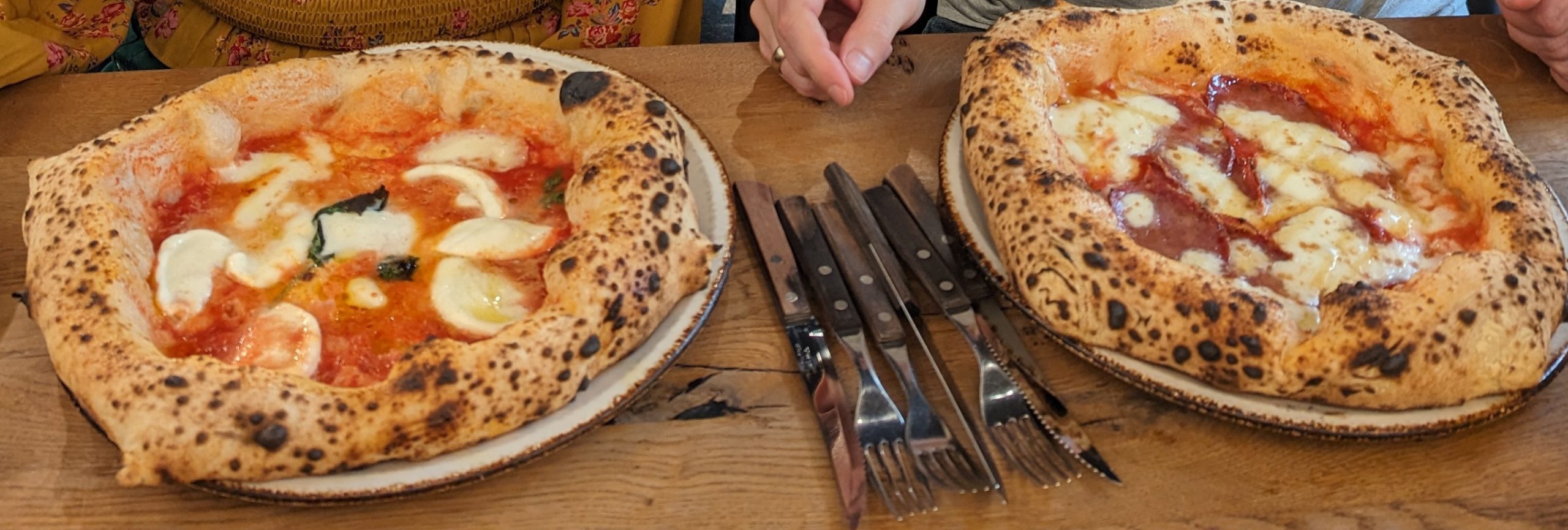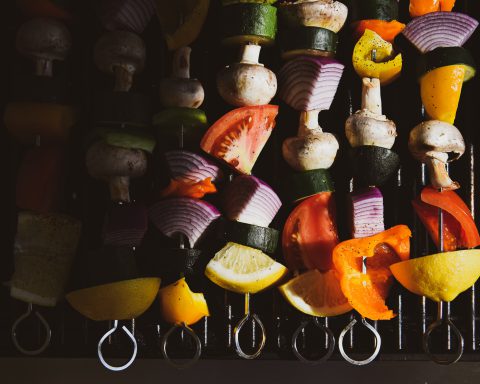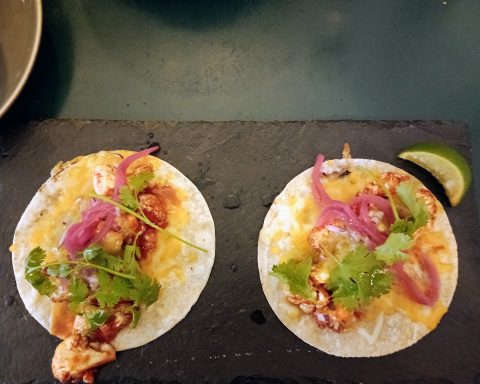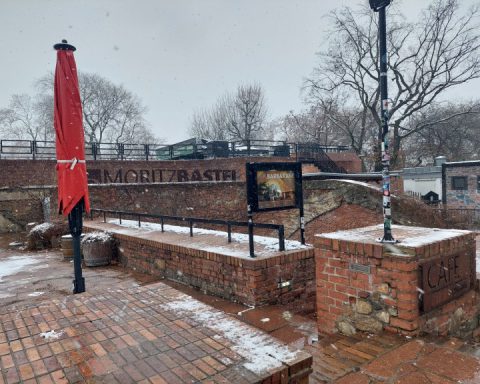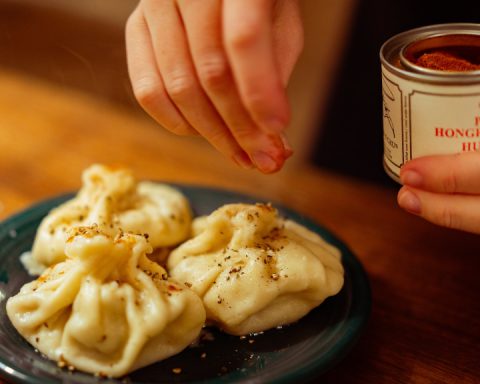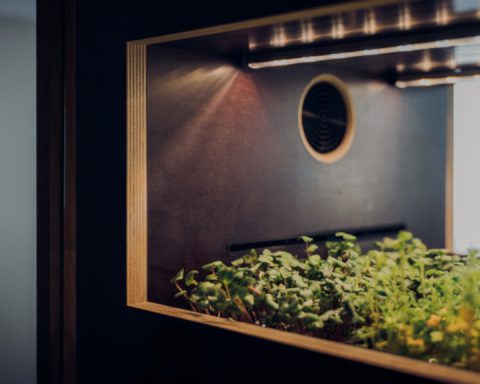What’s all the rage for pizza?
For me at least, it’s warm dough with gooey, melty, tasty cheese and a few other tidbits. What’s not to love about that?
It’s a bit funny thinking about pizza and its origins—Italy—and how it varies around the world. I grew up associating pizza with delivery and thick crusts full of grease. We had franchises or big chains (cough: Domino’s and Pizza Hut) to choose from in Canada. The pies were always LOADED with cheese, hence the grease, and whatever toppings. There was even a pizza place in my uni-town where you couldn’t order a pizza with more than two toppings because the slice would fall apart in your hands.
Oh yeah, another key component in Canadian pizza: eat slices with your hands.
The first time I ate pizza in a restaurant (besides the all-you-can-eat Pizza Hut lunch buffet) was during my study exchange in Austria. My friends and I would go to the “Italian” pizza place down the street when we were hungover on Sundays. We went so often that the owners got to know us. I can be a bit of a strange one with food at times. What can I say, I love substitutions. But my pizzas always seemed to come out differently than what I thought I’d ordered. Ohne Schinken turned into with corn. That was my first time eating corn on pizza. I recall it was bizarre to me in the beginning, but I dig it from time to time—it adds a nice sweetness.
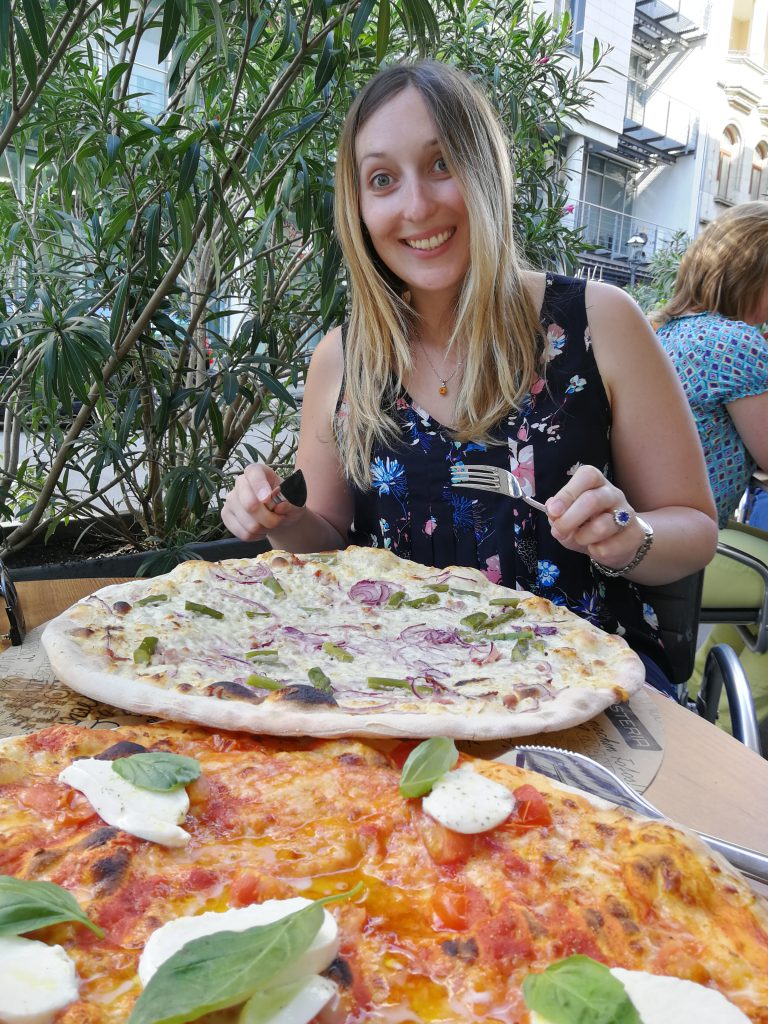
Let’s back up a second here. It was already strange for me to go to an actual restaurant to eat pizza. Add in a thin crust and fork and knife, check out the toppings, and it was almost like eating an entirely different food.
Needless to say, we became regulars at this “Italian” pizza place in small-town Austria (Italian is in quotations because I’m not sure the owners were actually of Italian descent). By the end of the study exchange, the restaurant knew all of our individual orders. It was a happy ending.
Leipzig’s turn! From delivery to 60 Seconds to Napoli
I can’t say for sure the first time we caved and ordered delivery in Leipzig. It is hard work finding a restaurant that actually delivers, and we try not to use Lieferando, perhaps because it sets a precedent. We tried out a few different restaurants over the last few years. We even ordered Domino’s Pizza several times. What halted that option was the inconsistency of the orders. The final time, the pizzas arrived with a Play-Doh-type consistency. Perhaps it wasn’t fully cooked. That solidified it though—kein mehr Domino’s.
We’d thought we found our pizza delivery saviour with a small franchise in town. Their pizzas were tasty, they had actual bacon on the menu. I grew up in Canada. I like Hawaiian pizza with bacon, not ham, and pineapple. We’re a sweet/salty mix of folk. Their prices have, however, steadily jumped higher and higher since COVID, and we question if it’s really worth it.
Our final order with them happened this past Valentine’s Day. We were used to waiting nearly an hour for delivery. But this time, after an hour and a half we had no pizzas. I can quickly turn into a hungry bear. It was a long wait! I called and gave the order information and that we’d paid, and asked where our pizzas were. They said to call back in 10 minutes. I obliged. The second call confirmed that our pizzas had been forgotten, and our dinner arrived another half-hour later.
Do as the locals do is a common phrase for a reason.
Living in Leipzig I’ve also had my fair share of pizzas at “Italian” restaurants. I’ve not had pizza in Italy, so I can’t give an actual comparison. But I think the restaurants here do go for a more similar style to the Italian pizzas. I’ve had cheap, easy, and tasty pizza with a thin crust. There’s been too-big pizza with some seasonal toppings. Even expensive, very tasty pizza. This is where I’m headed next.
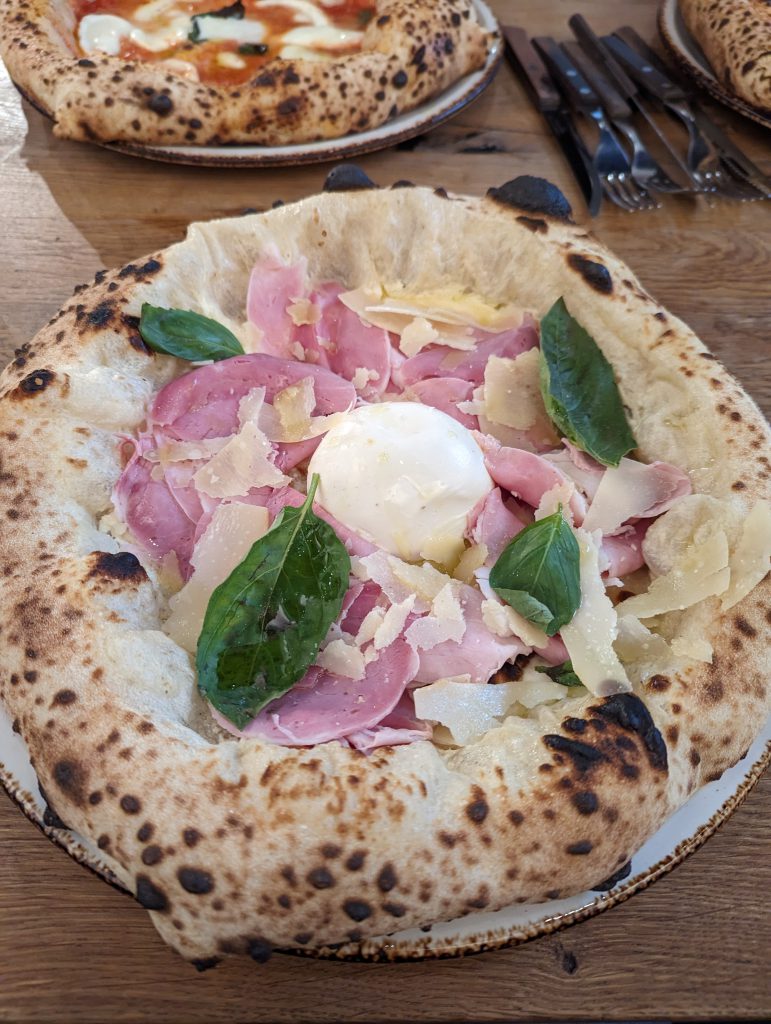
Do you know 60 Seconds to Napoli on Gottschedstraße near the west side of Zentrum? You probably do; basically, everyone I talk to knows it! You can find 60 Seconds to Napoli locations in a few other German cities as well, and their website shows it continues to expand.
I’d heard rumors of this restaurant and finally decided to check out what the fuss was over. When a friend was visiting last spring we went for lunch. We thought the prices are a bit high for pizza (11-17 euros in 2023) but carried on because I’d heard the pizza was worth it. The rumours were true. We had delectable pizzas. I had one with truffle sauce. It was rich, sweet, and savoury. The crust was light and airy while having the right kind of crisp on the outside for a good crunch. The pizzas were appropriately sized for individuals. I have yet to eat a pizza there in its entirety—I leave the outside crust area. I go for richer sauces that are creamy usually which makes them even more filling.
There’s even a cosmopolitan flare at 60 Seconds to Napoli.
The handful of times I’ve visited, I’ve heard different languages and accents buzzing about. A friend even told me she has spoken Portuguese with a server. The last time I went, we were speaking English. The server automatically switched to helping us in English. We continued in German and we all switched between Denglish. It’s an easy place to eat and enjoy yourself. Though, for dinners, good luck getting a seat (you can make a reservation on 60 Seconds to Napoli’s website).
Where then, does this glorious food invention hail from?
Again, the answer seems pretty straightforward: Naples, Italy. But what made pizza become an international sensation?
Reading a little here and there on the interwebs, the common research tells us some history. Ancient Greeks and Romans were known to eat flatbreads with similar characteristics to pizza. In the 17-and 1800s, working-class people around Napoli started using durum wheat and leavening agent to create an affordable and quick meal. Pizza became common within the region, and word spread. In the late 1800s, King Umberto I and Queen Margherita visited Naples. It’s said the queen ordered a simple pizza with tomato sauce, some soft white cheese and basil, and the Margherita pizza was born.
Pizza made its way to the US with Italian immigrants. Anyone who has spent time in the Northeast knows there’s a long tradition (and even rivalry) between New York-style and Chicago deep-dish pizza. Especially in the 1940s due to World War II, a lot of Italians emigrated to American cities and brought their food preferences with them. It was in the decades that followed that pizza started on its international path to fame.
For better or for worse, pizza is everywhere! It’s taken on a regional flare here and there. Some like an egg on top, while others prefer extra cheese. I’ve heard in Naples its primary focus is on the sauce that sits on top of the dough. What’s your go-to style and flavours?
60 Seconds to Napoli
Address: Gottschedstraße 1, 04109 Leipzig
Menu: https://60secondstonapoli.de/#menu
Reservations possible via Google
Regular opening hours
- Monday 11:30 am–11 pm
- Tuesday 12–11 pm
- Wednesday 12–11 pm
- Thursday 12–11 pm
- Friday 12–11 pm
- Saturday 12–10:30 pm
- Sunday 12–11 pm

